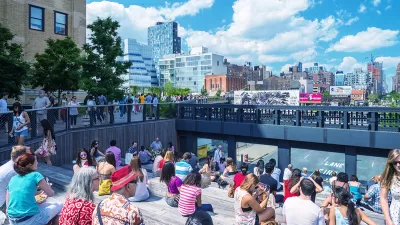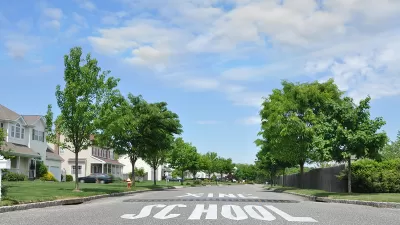The author of the "The Rise of the Creative Class" and the "New Urban Crisis" says cities have had their moment.

[Updated September 5, 2017] "As it turns out, the much-ballyhooed new age of the city might be giving way to a great urban stall-out," according to an opinion piece written by Richard Florida.
While many, if not most, large cities grew faster than their suburbs between 2000 and 2015, in the last two years the suburbs outgrew cities in two-thirds of America’s large metropolitan areas, according to a detailed analysis of the latest census data by the demographer William Frey of the Brookings Institution. Fourteen big cities lost population in 2015-16 compared with just five in 2011-12, with Chicago, the nation’s third-largest city, hemorrhaging the most people.
Florida presents more data to support this depiction of urban areas before examining some of the causes of this reversal of fortune. "Foremost is a recent uptick in violent crime," according to Florida, and then there's the fact that "the most desirable cities have become incredibly expensive places to live."
"Finally, the anti-urban mood in Washington and many state legislatures is making things worse for cities at the worst possible time," writes Florida to end the argument about the causes of the urban malaise. The opinion piece, however, is concluded with an appeal to the importance of cities in the national economy.
Florida's take on the national zeitgeist is echoed in another recent article from Bloomberg that pins much of the current demographic trends on choices made by the Millennial generation.
[Post updated with the correct title of The Rise of the Creative Class.]
FULL STORY: The Urban Revival Is Over

Planetizen Federal Action Tracker
A weekly monitor of how Trump’s orders and actions are impacting planners and planning in America.

Restaurant Patios Were a Pandemic Win — Why Were They so Hard to Keep?
Social distancing requirements and changes in travel patterns prompted cities to pilot new uses for street and sidewalk space. Then it got complicated.

Map: Where Senate Republicans Want to Sell Your Public Lands
For public land advocates, the Senate Republicans’ proposal to sell millions of acres of public land in the West is “the biggest fight of their careers.”

Maui's Vacation Rental Debate Turns Ugly
Verbal attacks, misinformation campaigns and fistfights plague a high-stakes debate to convert thousands of vacation rentals into long-term housing.

San Francisco Suspends Traffic Calming Amidst Record Deaths
Citing “a challenging fiscal landscape,” the city will cease the program on the heels of 42 traffic deaths, including 24 pedestrians.

California Homeless Arrests, Citations Spike After Ruling
An investigation reveals that anti-homeless actions increased up to 500% after Grants Pass v. Johnson — even in cities claiming no policy change.
Urban Design for Planners 1: Software Tools
This six-course series explores essential urban design concepts using open source software and equips planners with the tools they need to participate fully in the urban design process.
Planning for Universal Design
Learn the tools for implementing Universal Design in planning regulations.
Heyer Gruel & Associates PA
JM Goldson LLC
Custer County Colorado
City of Camden Redevelopment Agency
City of Astoria
Transportation Research & Education Center (TREC) at Portland State University
Camden Redevelopment Agency
City of Claremont
Municipality of Princeton (NJ)




























